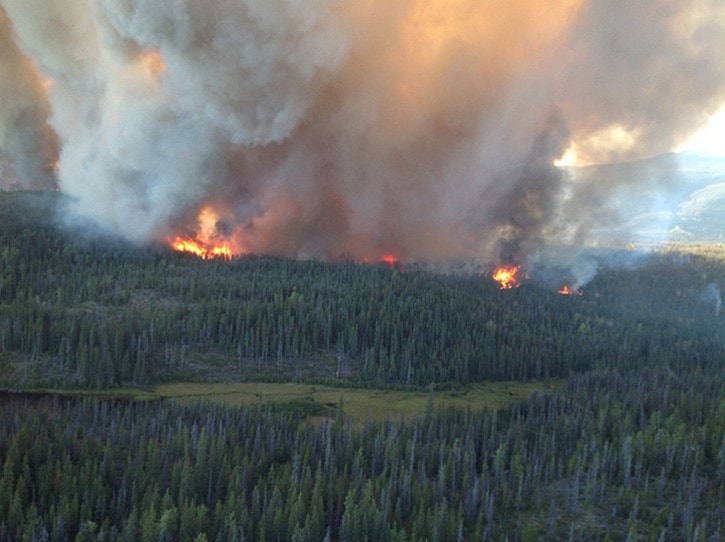As the temperature begins to heat up and the weather starts to dry up, concern over the ignition of wildfires is sure to ratchet up in the Burns Lake area.
Despite the damp and cool weather the area has experienced so far this spring, already there have been five fires in the Lakes District area and one fire in the Morice district, all six of which have been human-caused fires.
In 2013, the Lakes District experienced 35 forest fires, of which 14 were caused by human carelessness.
As of noon on June 19, the wildfire danger rating for Burns Lake was moderate, but the surrounding areas of the community, including Houston have a rating of high.
The areas with a high rating also include areas just south of Tchesinkut Lake.
The wildfire danger rating is used to express a number of factors that affect the fire environment, and include, ease of ignition and difficulty of control.
“Each situation is different and depends on many other factors, such as fuel type, terrain, slope and weather conditions,” Olivia Pojar, Communications Specialist for the wildfire management branch said.
The Northwest Fire Centre (NWFC) is responsible for forest fire protection for the western portion of the Northern Interior Forest Region and the northern portion of the Coastal Forest Region.
The area includes, the Forest Districts of Kalum, Skeena-Stikine, the North Coast and Nadina, and covers a quarter of B.C. from the coast to just west of Endako and from the Yukon boarder to Tweedsmuir Park, approximately 25 million hectares in size.
The major communities in the NWFC region are Burns Lake, Houston, Smithers, Terrace, Kitimat, Prince Rupert and Dease Lake, and the NWFC responds to an average of 160 fires, which burn approximately 18,000 hectares in the area each year.
One of the major concerns for the Nadina Forest District is the frequency of abandoned campfires.
Last year there were 32 abandoned campfires in the Nadina district and so far this year there have a been numerous campfires that have been left burning unattended as well.
A person that leaves a campfire unattended for any length of time can be fined up to $345 and anyone whose fire cause a wildfire can be subjected to a fine of $100,000 and be jailed for up to a year, and hit with the costs associated with fighting the fire and the damages.
“The NWFC encourages campers to always ensure that a fire is cool to the touch before leaving the area for any length of time, or going to bed at night,” Pojar said, “all campfires should be surrounded by a fuel-free area and either eight litres of water or a readily available shovel.”
Along with human caused wildfires, another primary cause of wildfires is lightning.
Lightning is the cause of starting approximately 50 per cent of all B.C. forest fires.
For the NWFC, weather is the predominant controlling factor when it comes to the frequency and severity of fires.
Cool, damp fires yield few fires, and those that do start can be contained and brought under control easier, while dry, hot weather increases wildfire danger.
Typically the severity of wildfire season depends on the combination of factors, such as terrain type, snow pack, lightning strikes, levels of drought and forest floor moisture content.
“The NWFC maintains its level of preparedness by studying forecasts that allow for a good idea of what to expect in the short-term,” Pojar said. “for long-term preparedness, forecasts have a diminished level of reliability.”
As far as fighting wildfires is concerned, Burns Lake has one unit crew consisting of 20 members.
There are four initial attack crews, each consisting of three crew members located in Burns Lake and Houston, and in addition, five supervisory staff work both bases in Burns Lake and Houston.
These crew members received extensive training each year in fire behaviour knowledge, fire management tactics, communications, air operations, orienteering, fireline organization and fireline equipment use.
As well, they must meet national physical fitness requirements.
For more information regarding wildfire danger ratings and for wildfire prevention visit, bcwildfire.ca/Situation/ and bcwildfire.ca/prevention.
To report a wildfire, call the toll-free number at 1-800-663-5555.
